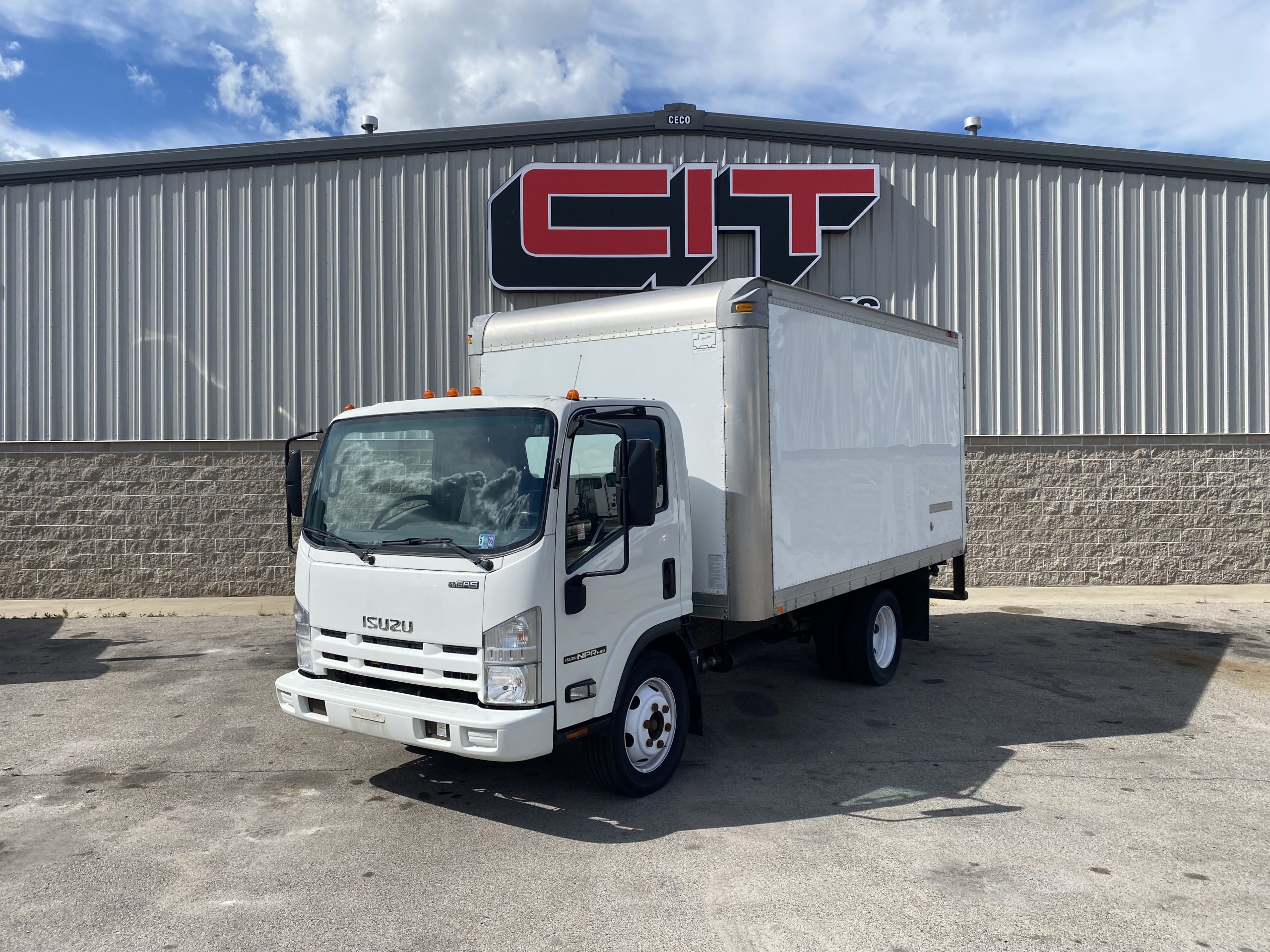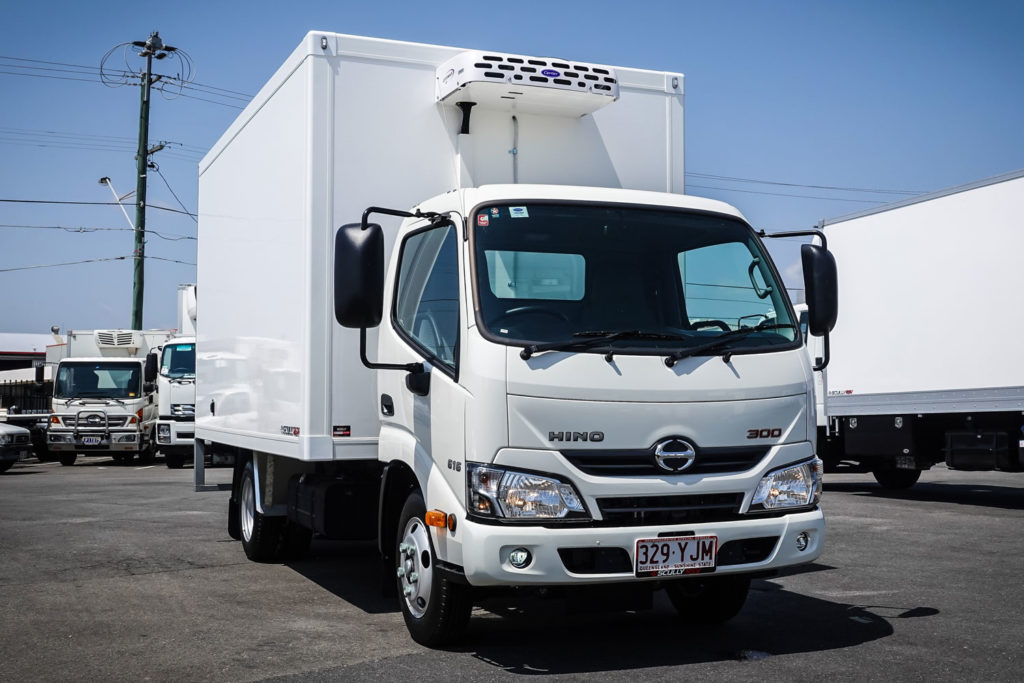Trucks are indispensable tools in virtually every sector of the global economy. From transporting goods across continents to hauling raw materials in construction zones, trucks form the backbone of logistics, infrastructure, and commerce.
But behind their rugged exteriors and powerful engines lies a critical consideration that often determines the true cost of ownership: service intervals.
These are the manufacturer-recommended distances or periods between scheduled maintenance tasks like oil changes, fluid top-offs, filter replacements, and mechanical inspections. While this may seem like a technicality, it plays a decisive role in operational planning, vehicle reliability, fleet productivity, and long-term profitability.
Service intervals are essentially the heartbeat of any vehicle’s lifecycle. For trucks, which often run continuously over long distances or under heavy loads, these intervals become even more vital. A truck with a short service interval might offer affordability or simplicity but could require frequent downtime, reducing productivity and increasing labor and parts costs.
On the other hand, trucks with long service intervals are usually equipped with more advanced technologies and materials, allowing them to operate for longer durations without maintenance.
These trucks may cost more upfront but promise fewer interruptions and better long-term efficiency. Understanding which trucks fall into either category is critical for businesses aiming to optimize their operations.
Different manufacturers engineer their vehicles based on a range of operational philosophies. Trucks like the Tata LPT 407 and Mitsubishi Fuso Canter prioritize rugged, cost-effective design but rely on older engine technologies and minimal diagnostics systems, leading to shorter maintenance cycles.
These trucks are workhorses built for rough conditions, but they require constant attention to keep running at peak performance. Meanwhile, vehicles like the Mercedes-Benz Actros and Freightliner Cascadia integrate cutting-edge telematics, smart diagnostics, and synthetic lubricants to dramatically stretch out maintenance intervals. They are built with uptime in mind, ideal for long-haul freight operations that need every mile to count.
It’s important to note that service intervals are not just dictated by the engine. Other components such as the transmission, cooling system, emissions hardware, and even the suspension contribute to the maintenance rhythm of a truck.
Trucks operating in harsh environments—such as dusty mines, congested urban streets, or mountainous regions—tend to require more frequent maintenance regardless of what the factory manual says.
That’s why understanding not only the official service interval but also the real-world interval under working conditions is crucial for making informed decisions.
This article explores five trucks known for having the shortest service intervals—vehicles that demand more frequent attention and are better suited for environments where service access is easy and inexpensive. These trucks, while reliable, need a more hands-on maintenance approach.
Conversely, we’ll also cover five trucks that excel in offering extended service intervals, maximizing uptime and operational efficiency. These are generally favored by companies that operate over long distances or in highly competitive logistics markets where downtime can mean significant financial loss.
Whether you’re an independent owner-operator looking to minimize garage time, a fleet manager juggling dozens of vehicles, or a logistics planner trying to understand the total cost of ownership, service intervals matter more than most people realize.
They’re not just maintenance schedules—they’re productivity schedules. Knowing which trucks demand more attention and which ones can be trusted to keep going mile after mile with minimal intervention could make all the difference between profit and loss.
This article aims to offer insight, not only into which trucks fall into each category but also why their service intervals are structured the way they are, helping you better match your vehicle choices with your operational needs.
ALSO READ: 5 Cars That Never Have Software Glitches and 5 That Need Constant Updates

1. Mitsubishi Fuso Canter
The Mitsubishi Fuso Canter is a widely used light-duty truck that has earned a reputation for reliability, especially in densely populated urban areas across Asia, Australia, and parts of Europe. Despite its reliability, one of its most criticized aspects is its relatively short service interval, which historically hovers around 10,000 to 15,000 kilometers (approximately 6,000 to 9,000 miles).
This is especially apparent in older models and those used in severe duty conditions. Urban delivery fleets using the Canter frequently report the need for rapid oil degradation due to stop-and-go driving, short trips, and high idle times—all of which prevent the engine from reaching ideal operating temperatures.
The diesel engines powering the Canter, while robust, tend to accumulate carbon deposits quickly under these conditions. As such, oil changes, fuel filter replacements, and air intake inspections are required more frequently than in comparable trucks. Maintenance also includes periodic transmission checks, brake inspections, and coolant monitoring.
While the truck can handle heavy payloads for its size, this increases the stress on its drivetrain, leading to faster wear and tear. To avoid unplanned breakdowns or warranty disputes, operators typically stick to strict preventive maintenance schedules, even if the truck seems to be performing well on the surface.
What’s more, the Canter’s earlier generation models lacked modern onboard diagnostics, meaning there’s no real-time monitoring or adaptive service reminders. Drivers and fleet owners must therefore, track service records manually or rely on aftermarket fleet management systems.
Even with these efforts, the frequency of required maintenance can disrupt operations, especially in fast-paced delivery services where downtime is costly. Newer models have improved this situation slightly with better ECU management, but the historical perception of the Canter requiring constant upkeep persists.
However, it’s not all bad news. One of the redeeming qualities of the Fuso Canter is the simplicity of its maintenance tasks. The layout of its engine and components makes access relatively easy, and parts are widely available in most markets.
Labor costs for routine servicing are manageable, and local mechanics are usually well-acquainted with this platform. This accessibility softens the financial blow of frequent maintenance, but from a fleet efficiency perspective, the short service intervals still pose a challenge for those prioritizing uptime and long-term ROI.

2. Isuzu NPR Series
The Isuzu NPR Series is a favorite in many commercial fleet applications, particularly among urban delivery companies, small construction businesses, and food distribution services. Its global popularity can be attributed to its compact design, excellent turning radius, and cost-effective operation.
Yet, despite its utility, the NPR is known to require service every 8,000 to 12,000 kilometers (roughly 5,000 to 7,500 miles), depending on the model and usage pattern. This shorter interval is a result of several engineering and operational realities that stem from its design as a light-duty urban truck rather than a long-haul vehicle.
The NPR typically sees high idle times and is often subjected to repeated short trips, which cause condensation build-up in the oil and incomplete combustion cycles. These patterns quickly degrade engine oil and air filters, prompting more frequent changes to maintain optimal performance.
Unlike larger highway trucks designed for sustained speeds, the NPR’s engine endures constant RPM fluctuations, creating more engine stress over short distances. Furthermore, its limited onboard fluid reservoirs and smaller component tolerances contribute to faster wear when subjected to demanding driving cycles.
Another major factor contributing to the NPR’s short service interval is the aging design of many global models still in circulation. While newer models have made strides with cleaner emissions systems and more advanced ECUs, many NPRs on the road still rely on conventional diesel platforms that lack sophisticated adaptive service scheduling.
These trucks may not warn drivers until an issue has already escalated, putting the responsibility on the operator to track service meticulously. Combined with varying fuel quality in different countries, this means filters, injectors, and even sensors may require inspection far more frequently than manufacturers suggest under “ideal” conditions.
Despite these drawbacks, the NPR Series remains a solid investment due to its long-term durability if well maintained. Fleet managers understand that while the service intervals are shorter, the vehicle offers high reliability and low total cost of ownership. Parts are abundant, and servicing can be performed almost anywhere with diesel mechanics.
Still, for those looking for trucks with minimal downtime or extended service cycles, the NPR may require more maintenance oversight and discipline than others in its class.

3. Hino 300 Series
Hino’s 300 Series is a durable, medium-duty truck platform that serves a wide range of industries from courier services to small construction firms. Built on Toyota’s principles of lean engineering, it is a dependable performer in light-duty and mid-duty applications.
However, Hino trucks—including the 300 Series—often require service every 10,000 kilometers under normal operation, a number that can shrink under more strenuous conditions like off-road usage or consistent heavy hauling. These intervals, while not the shortest in the industry, are considered tight by today’s standards, especially when other trucks offer double or even triple the service range.
One of the primary reasons for this short service window lies in the truck’s high-efficiency diesel engines, which prioritize low emissions and clean combustion at the cost of oil longevity. These engines run hot and produce more carbon residue during cold starts or idling, which is common in the stop-start driving environment of city deliveries.
The engine oil degrades faster, and the system is sensitive to contamination, requiring proactive maintenance to keep performance at peak. Oil changes, brake inspections, EGR system cleaning, and regular filter replacements are all part of the typical Hino 300 maintenance checklist.
Moreover, the emissions systems—including the diesel particulate filter (DPF) and selective catalytic reduction (SCR) units—can create additional service demands if not operating under optimal conditions.
For trucks running short, low-speed routes, regeneration cycles may not complete effectively, leading to frequent manual regeneration or DPF cleaning. This can escalate operating costs and lead to unexpected service stops. Owners in colder climates or dust-heavy environments report even more frequent servicing, particularly related to fuel filters and air intake systems.
On the bright side, Hino is known for its structured and transparent service documentation, which simplifies fleet planning. The 300 Series is also supported by a wide dealer network in most global markets.
Its components are relatively modular and easy to replace, allowing for faster turnaround times. Nevertheless, for operators who value long gaps between service intervals, the Hino 300 Series may not deliver the flexibility or endurance between maintenance visits that other trucks in its weight class now offer.

4. Tata LPT 407
The Tata LPT 407 is a commercial vehicle that dominates the light to medium truck market in India and neighboring countries. It is prized for its simplicity, ruggedness, and low acquisition cost.
However, this rugged build comes with the trade-off of extremely short service intervals, often as low as 5,000 to 7,500 kilometers, particularly in heavy-load or rural operations. These short cycles are driven primarily by the truck’s use of older-generation diesel engines and minimal automation or engine management systems.
The LPT 407 typically operates in unforgiving conditions—bad roads, extreme heat, and overloaded hauls are part of its daily routine. This leads to accelerated wear on nearly every component: engine oil breaks down faster, brakes overheat frequently, and suspension components endure immense strain.
Without the benefit of advanced lubricants, automatic diagnostics, or real-time engine monitoring, these trucks must rely on manual checkups and highly regimented maintenance plans. Missing even one interval can result in catastrophic damage or significantly reduced engine life.
Another reason the LPT 407 requires frequent maintenance is its minimalist design philosophy. Designed for affordability and ease of repair, the truck lacks advanced filtration systems, emission control technologies, or adaptive service intervals.
While this simplicity is a benefit in areas with limited access to authorized service centers or OEM parts, it also means operators must be extremely vigilant with routine upkeep. There are no electronic safety nets or warning systems to alert drivers to emerging issues—preventative maintenance is the only line of defense.
Still, the LPT 407 has earned a place of respect in developing regions because of its reliability under hardship. When well-maintained, it can last several hundred thousand kilometers. The cost of servicing is relatively low due to abundant parts and affordable labor.
In fact, many owners treat the frequent service intervals as a regular part of ownership, baking them into their operating models. But by global standards, the 407 represents an outdated approach to truck maintenance—one that prioritizes simplicity and cost over longevity between service visits.

5. Ford F-450 Super Duty (Diesel)
The Ford F-450 Super Duty, particularly in its diesel variants, is a heavy-duty pickup truck often used in commercial, agricultural, and industrial towing operations. Despite its high power output and sophisticated technology, the F-450 has historically demanded frequent maintenance, especially in earlier diesel models featuring the 6.0L and 6.4L Power Stroke engines.
These engines were known for performance, but also for being sensitive to oil quality, coolant system performance, and exhaust system cleanliness. Typical service intervals are around 7,500 miles (12,000 kilometers), but many owners opt for even shorter intervals when used for extreme towing or off-road duties.
The 6.0L Power Stroke engine, in particular, developed a reputation for EGR issues, head gasket failures, and oil cooler blockages—many of which could be mitigated through strict maintenance routines. Owners of these trucks often perform oil changes every 5,000 miles or less to ensure reliability.
Later models with the 6.7L engine introduced improvements but still demand regular attention to the fuel system, turbochargers, and DPF filters. The nature of diesel combustion, especially under heavy loads, creates soot and heat that quickly degrade engine oil and increase the risk of injector clogging.
Another factor adding to the short service window is the truck’s heavy-duty use cases. Whether hauling fifth-wheel trailers or construction equipment, these vehicles operate under constant strain.
High RPMs, hot climates, and mountainous terrain all accelerate oil breakdown and exhaust system contamination. In addition, newer F-450 models have complex emissions systems with SCR and DEF (Diesel Exhaust Fluid) components that must be maintained properly or risk triggering limp mode or engine derating.
While Ford has added onboard oil-life monitors and improved diagnostics, the overall maintenance culture around the F-450 diesel remains conservative. Owners understand that these powerful trucks can be dependable workhorses—but only when they are pampered.
For commercial operations, this means scheduling regular downtime for fluid changes, sensor recalibrations, and diesel filter replacements. Though the truck delivers high performance, the cost is a shorter leash on service intervals compared to some of its heavy-duty competitors.
5 Trucks with the Longest Service Intervals

1. Mercedes-Benz Actros
The Mercedes-Benz Actros is widely regarded as one of the most advanced heavy-duty trucks in the world, and a major part of its appeal lies in its exceptionally long service intervals, which can extend up to 60,000 kilometers (about 37,000 miles) under ideal operating conditions.
This remarkable maintenance spacing is not just a product of high-end engineering—it’s the result of a comprehensive systems-based approach that combines synthetic lubricants, real-time diagnostics, precision component machining, and intelligent driver support technologies. The Actros is a product of German automotive discipline, designed to reduce downtime and maximize efficiency over long hauls.
One of the standout features of the Actros is its Predictive Powertrain Control (PPC) system, which not only assists the driver in optimizing fuel efficiency but also feeds data into the truck’s onboard diagnostic system to monitor component wear, engine performance, and oil condition in real-time.
Rather than following a fixed mileage-based maintenance schedule, the truck adapts its service needs based on actual usage patterns.
For example, highway mileage under light load conditions leads to less engine stress and thus a longer maintenance cycle. This dynamic approach gives fleet managers incredible control over when and how to schedule servicing, thereby reducing unnecessary downtime.
Moreover, Mercedes-Benz has invested significantly in high-durability components that support these extended service intervals. Engine parts are built to tighter tolerances and use advanced materials designed to resist heat, friction, and wear.
High-capacity oil reservoirs paired with long-life synthetic lubricants allow oil change intervals to be pushed further than what’s typical for trucks in its category.
The emissions system, including the diesel particulate filter (DPF) and selective catalytic reduction (SCR) unit, is also built for durability, with built-in self-cleaning and regeneration capabilities that minimize manual intervention.
The result of all these technologies is a truck that can cover immense distances with minimal interruption, making it especially valuable for logistics companies operating on strict schedules. The initial cost of the Actros is high, and so is its technological complexity, but over the life of the truck, the lower frequency of maintenance often justifies the investment.
For companies managing large fleets over transcontinental routes, the Actros stands out not only for its luxury and performance but also for its ability to keep moving longer between pit stops than nearly any of its competitors.

2. Volvo FH16
The Volvo FH16 is another powerhouse in the world of long-haul trucking, and it is engineered to deliver exceptional longevity between service intervals, often exceeding 50,000 kilometers (around 31,000 miles), depending on load conditions, oil quality, and driving behavior.
Volvo’s emphasis on safety, efficiency, and uptime drives its maintenance philosophy, with long intervals being an integral part of the brand’s offering to fleet operators. What sets the FH16 apart is its holistic approach—combining smart software, durable hardware, and a robust service network.
The truck’s I-See and I-Shift systems collect real-time terrain, driver, and engine performance data to calculate service requirements based on wear trends rather than rigid mileage. This adaptive logic ensures components are only serviced when truly necessary, avoiding premature oil changes and downtime.
Engine oil, transmission fluid, and even air filter maintenance can be delayed based on how smoothly and consistently the truck is operated. For drivers who adhere to Volvo’s optimal operating guidelines—such as consistent cruising and minimal idling—the system rewards them with less frequent shop visits.
Volvo’s D16K engine platform, used in the FH16, is built with extremely robust internals, including forged steel pistons, cooled exhaust manifolds, and advanced turbocharging. These components reduce thermal stress and are paired with advanced lubricants capable of sustaining performance over extended periods.
Additionally, the cooling system and filtration technologies are designed to prevent contaminant buildup, which is a key factor in extending the life of engine fluids. These engineering decisions make the FH16 not only powerful—capable of pulling enormous loads—but also incredibly stable across long distances.
Furthermore, Volvo’s fleet maintenance programs allow companies to synchronize vehicle data with service centers. If a truck nears its threshold, technicians can be alerted in advance, minimizing unexpected breakdowns.
This level of predictability and flexibility has made the FH16 a favorite among logistics companies managing cross-border deliveries. Although the initial cost of purchasing and outfitting the FH16 is steep, the long service intervals and low rate of mechanical failure make it a strong long-term investment for companies prioritizing uptime, driver satisfaction, and cost control.

3. Scania R-Series
The Scania R-Series is one of the most iconic long-haul trucks in the industry and is particularly revered in Europe and parts of South America.
Known for its exceptional engineering quality, the R-Series is capable of achieving service intervals of up to 45,000 to 60,000 kilometers, especially when using Scania’s long-drain oils and running under favorable operating conditions. This efficiency stems from a deeply integrated approach to engine design, telematics, and modular maintenance scheduling.
Scania’s modular platform means parts are standardized and built to be serviced independently, reducing the frequency with which major overhauls are needed. One of the most advanced aspects of the R-Series is its Scania Maintenance with Flexible Plans system, which constantly analyzes real-time data from over 100 vehicle parameters.
These include engine load, driving style, terrain, and ambient conditions. Based on this information, the truck tailors its maintenance schedule to each individual vehicle rather than following a generic factory-recommended plan. Trucks that are driven carefully in optimal conditions can go significantly longer without needing service.
At the heart of the R-Series is Scania’s inline-six or V8 engine (depending on configuration), both of which are designed for long life and smooth operation. These engines use advanced turbo compounding and optimized combustion cycles, which minimize soot production and reduce stress on the engine oil.
The emissions control system is similarly built to last, with smart DPF regeneration and low-defect SCR systems that reduce the need for manual cleaning or interventions. Thanks to this combination of design and intelligent management, the R-Series rarely requires service between long hauls, giving it one of the lowest downtime records in its class.
Scania also offers proactive maintenance support through its service contracts, allowing for just-in-time servicing based on predicted wear rates. This gives fleet operators better control over logistics planning and resource allocation.
Even though the R-Series may cost more upfront and requires high-grade lubricants and parts, the extended maintenance intervals and component lifespan reduce long-term operating costs dramatically. In an industry where every hour of downtime can translate to lost revenue, the R-Series’ ability to keep rolling longer is a massive advantage.

4. Kenworth T680
The Kenworth T680 is a top contender in the North American Class 8 truck segment and has carved out a name for itself with its long oil and maintenance intervals, especially when paired with the PACCAR MX-13 engine.
Under optimal highway conditions, the T680 can go up to 50,000 miles (approximately 80,000 kilometers) between oil changes, provided it’s using high-quality full-synthetic oils and operating under clean, low-dust environments. This impressive interval makes it a favorite among owner-operators and freight companies who prioritize uptime.
The PACCAR MX-13 engine is designed with long-haul efficiency in mind. It uses low-friction materials and intelligent cooling systems, reducing wear and stabilizing thermal conditions over extended periods. In conjunction with advanced fuel injectors and combustion management, the engine burns cleanly, which significantly slows oil contamination.
The aftertreatment system—composed of the DPF and SCR units—is also robust and designed to go long distances before needing service or manual regeneration. As a result, the emissions system places less strain on the engine and oil quality than other designs that rely on frequent regeneration.
Kenworth complements this robust mechanical platform with integrated smart monitoring systems, allowing operators to track oil condition, filter saturation, and other key metrics through the digital dashboard. This makes it easier to transition from a rigid schedule to a usage-based maintenance approach.
Fleet managers especially appreciate the ability to remotely monitor truck health and proactively schedule service before issues arise. This data-driven approach helps reduce the likelihood of unexpected downtime and supports cost-effective maintenance scheduling.
Additionally, the T680’s design includes easily accessible service points, minimizing the time and labor required when maintenance is finally due. Despite its size and complexity, mechanics often report that the T680 is relatively straightforward to work on, which contributes to shorter workshop turnarounds.
Its long intervals combined with practical serviceability make the T680 one of the best choices for long-haul operations across North America. When uptime and operating costs are paramount, the T680 consistently delivers a balance of power, efficiency, and maintenance-friendly engineering.

5. Freightliner Cascadia
The Freightliner Cascadia is a staple in the U.S. and Canadian freight landscape and represents the best of Daimler’s North American engineering.
When configured with the Detroit DD15 engine, the Cascadia boasts oil change intervals of up to 75,000 miles (120,000 kilometers) under ideal driving conditions, making it one of the longest-service-interval trucks in its class. This is especially true when fleets adhere to Freightliner’s recommendations for synthetic oils, low-sulfur diesel, and high-efficiency air filters.
A big reason for these extended intervals is the Integrated Detroit Powertrain (IDP), which includes the DD15 engine, Detroit transmission, and Detroit rear axles—all designed to work in harmony. This integrated system allows for optimized fuel combustion, minimal gear strain, and smoother torque delivery, which collectively reduce the workload on engine oil and internal components.
The aftertreatment system, featuring an advanced DPF and SCR unit, is also optimized for low maintenance. Automated regeneration cycles keep the DPF clean and functioning effectively without excessive fuel use or service interruptions.
Another notable feature of the Cascadia is its Detroit Connect system, which provides telematics, remote diagnostics, and performance analytics.
Through this cloud-connected platform, fleet managers can monitor vehicle health in real time and get alerts when service is actually needed—rather than relying on calendar dates or estimated mileage. This smart monitoring makes it possible to further stretch service intervals responsibly, especially when paired with attentive driver behavior and consistent driving environments.
In addition to engineering excellence, Freightliner supports these long intervals with a nationwide service infrastructure and strong aftermarket parts availability. Even when maintenance is required, the Cascadia can typically be returned to the road quickly thanks to easy access to authorized service centers.
For companies with large fleets and long-haul missions, the Cascadia is a top-tier choice for reducing total cost of ownership through reduced servicing needs, extended component life, and industry-leading support.
ALSO READ: 5 Cars That Still Drive Like New at 10 Years and 5 That Feel Ancient
In the world of commercial trucking, uptime is currency. Every minute a truck spends in the shop is a minute it isn’t generating revenue, transporting goods, or meeting delivery deadlines. That’s why understanding the service interval characteristics of your fleet is not just a technical concern—it’s a strategic one.
The trucks explored in this article represent two sides of the same coin: those that demand frequent maintenance and attention, and those engineered to run longer without interruption. Both categories serve specific purposes, and recognizing where each fits best is essential to optimizing efficiency and profitability.
The five trucks with the shortest service intervals—the Mitsubishi Fuso Canter, Isuzu NPR, Hino 300 Series, Tata LPT 407, and Ford F-450 Super Duty—demonstrate that frequent service requirements are not always a drawback.
In fact, for certain environments and use cases, such as local delivery, municipal operations, or developing-world logistics, having a mechanically simple vehicle that’s easy and cheap to maintain may outweigh the inconvenience of frequent checkups.
These trucks tend to be less expensive upfront, have easy access to parts, and often don’t require specialized service centers for repairs. In markets where labor is inexpensive or downtime isn’t as costly, their shorter service intervals become manageable, even strategic.
On the flip side, the five trucks with the longest service intervals—the Mercedes-Benz Actros, Volvo FH16, Scania R-Series, Kenworth T680, and Freightliner Cascadia—represent the pinnacle of modern truck engineering. They are equipped with advanced diagnostics, predictive maintenance technologies, and high-durability components.
These trucks are ideal for companies where time is money and logistics must flow without hiccups. The cost savings from fewer service visits, extended component life, and fewer breakdowns can easily outweigh the higher initial investment. These trucks are built for high-volume operations, such as intercity freight or transcontinental logistics, where every reduction in downtime results in measurable gains.
Of course, these comparisons don’t exist in a vacuum. Real-world variables such as driving conditions, load weight, climate, driver behavior, and regional fuel quality can all skew how often a truck needs maintenance. Even a truck designed for long intervals might require more frequent servicing if it operates in mountainous terrain or extreme temperatures.
Conversely, a short-interval truck used with care in ideal conditions might exceed expectations. That’s why smart fleet management is not just about picking the best truck on paper but about understanding how each vehicle aligns with the actual conditions it will face.
Another aspect worth considering is the evolution of truck maintenance philosophies. As technology advances, trucks that once required frequent servicing are now benefiting from synthetic lubricants, longer-lasting filters, and integrated monitoring systems.
Manufacturers are working hard to bridge the gap between performance and longevity, recognizing the pressure fleet owners face in maintaining profitability. This means that over time, even traditionally short-interval trucks may see improvements through upgraded components or new service strategies.
Ultimately, the question isn’t whether short or long service intervals are inherently better—it’s whether they match your needs. If your operations take place in environments where downtime must be minimized and trips span thousands of miles, investing in a truck with extended service intervals is the clear choice.
If you operate in a region where quick maintenance is easy and cost-effective, or your routes are short and predictable, then a shorter interval truck might offer better returns.
In summary, service intervals are a window into the design philosophy of a truck and a critical factor in its suitability for specific applications.
Whether you prioritize resilience, cost-efficiency, uptime, or ease of maintenance, aligning your vehicle choice with its service characteristics will help you make better-informed, financially sound decisions. And in an industry where every decision impacts the bottom line, choosing the right truck with the right service interval could be one of the smartest moves you make.
